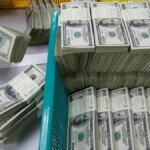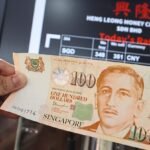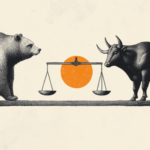Economic and financial sanctions often backfire. The most notable example is the weaponization of the dollar against Russia. The measure has sparked a global movement to de-dollarize, the opposite of the punitive move’s strategic intent.
The historic miscalculation didn’t stop US Senator Marco Rubio of Florida from introducing a bill in Congress to punish countries that de-dollarize. The bill seeks to ban financial institutions facilitating de-dollarization from the global dollar system.
Rubio’s bill, ominously called the Sanctions Evasion Prevention and Mitigation Act, would require US presidents to sanction financial institutions using China’s CIPS payment system, Russia’s financial messaging service SPFS and other alternatives to the dollar-centric SWIFT system.
Rubio is not alone in targeting countries bidding to de-dollarize. Economic advisors to presidential candidate Donald Trump are discussing ways to punish nations that are actively shifting away from the dollar.
The Trump team has proposed “to sanction both allies and adversaries who seek active ways to engage in bilateral trade in currencies other than the dollar.” Violators would be subjected to export restrictions, tariffs and “currency manipulation charges.”
Awakening BRICS
US policymakers and pundits in the financial media were initially dismissive of de-dollarization. They argued the dollar is used in some 80% of all global financial transactions. No other currency even comes close.
But financial sanctions against Russia, imposed after Russia’s military intervention in Ukraine’s Donbas region in 2022, became a turning point. The trend to de-dollarize expanded rapidly and has now arguably become irreversible.
In May this year, the Association of Southeast Asian Nations (ASEAN) announced plans to de-dollarize their cross-border trade and use local currencies instead. The announcement made few global headlines but ASEAN is a huge trading bloc comprised of ten countries with a combined population of 600 million people.
Other agreements to bypass the dollar system include barter deals. Iran and Thailand are trading food for oil while Pakistan has authorized barter trade with Iran, Afghanistan and Russia. China is building a state-of-the-art airport in Iran, to be paid for in oil.
Cryptocurrencies are also being used to bypass the dollar system and avoid scrutiny from the long arm of American law. Cryptos like Bitcoin enable individuals to send and receive funds from anywhere in the world anonymously, outside the legacy banking system.
De-dollarization is high on the agenda of BRICS, which is rapidly becoming the world’s largest economic bloc.
Until 2022, BRICS had few clearly defined goals apart from a shared desire to develop a counterweight to the G7. But the weaponization of the dollar system and the freezing of US$300 billion in Russian reserves held in Western banks gave the group sharp new focus and purpose.
BRICS started as an unlikely coalition. The five founding members are located on three different continents and have distinct cultures, political structures and economic systems. But they share a desire to create a multipolar world.

BRICS is economically driven and has no ideological program. It is primarily focused on economic development and cooperation. Its ethos is based on consensus and reciprocity.
China is the largest trading partner for most countries, making it the economic linchpin of BRICS. As China gradually de-dollarizes, its trading partners are likely to follow in various degrees.
The petrodollar
US control over the global financial system can be traced to 1974 when the American government convinced Saudi Arabia to sell its oil only in dollars. The agreement followed the US decision in 1971 to default on the gold standard. President Richard Nixon closed the so-called gold window where dollars could be exchanged for physical gold.
The US was fighting two wars at the same time – the war in Vietnam and the war on poverty – and the government issued more dollars and debt than could be backed by gold. The petrodollar assured continued global demand global for dollars.
The agreement required all oil-importing countries to maintain dollar reserves. Oil-exporting countries invested their dollar surpluses in US bonds and treasuries, providing continuous financing for the US national debt.

US debt concerns
Control over the world’s reserve currency gives the US significant power over other countries. It controls the on-and-off ramps of the global financial system and can sanction any country it perceives as an economic or political adversary.
Moreover, the government can issue loans to foreign countries in its own currency. The International Monetary Fund loans money to countries that need to import essentials like oil, food and medicine but lack the needed dollars.
Providing loans to countries typically comes with strict neo-liberal conditions, namely opening up the economy, privatizing public enterprises and liberalizing financial markets. The results have been less than optimal.
Pakistan, Argentina and Egypt are perennial IMF clients and illustrate that countries rarely become prosperous by incurring debt. In April this year, Pakistan received its latest aid package of $3 billion, its 23rd IMF loan since 1958.
The petrodollar made it easier for the US to finance its debt and led to profligate spending by the US government. In 1985, just ten years after the petrodollar agreement, the US became the biggest debtor in the world.
In 1974, the US national debt was $485 billion, or 31% of GDP. This year, the national debt surpassed $35 trillion, representing 120% of GDP.
Interest payments on the national debt will exceed $850 billion this year, making it the biggest item in the national budget, ahead of defense spending and social security. Without a major course correction, servicing the national debt will crowd out all discretionary spending in a few years.
The debt crisis underscores rising US concerns about de-dollarization. Fewer users of the dollar means fewer buyers of US debt.
Investors have long regarded US bonds as a safe haven. Bonds offer a stable return and payment is guaranteed by the government. But in the past few years, investor demand for long-term US debt has come under pressure. A clear sign of trouble: the dollar and gold, which for years had traded in a narrow bandwidth, started to diverge.

The concern of investors is based on simple arithmetic. If the US issues more dollars/debt than economic growth justifies, it causes inflation. When bond yields are 4% and inflation is 8%, bonds are a loss-making investment, which is not good for pension funds and other investors with long-term commitments.
The US bond market is valued at $50 trillion, a massive amount by most measures. But the figure pales in comparison to the nominal value of the global dollar system, which is virtually incalculable but in excess of a quadrillion dollars.
- The off-shore shadow banking is estimated at $65 trillion
- The derivative market is valued at $800 trillion
- The off-shore shadow banking market is $65 trillion
- The eurodollar market is $5 trillion to $13 trillion
De-dollarization means that many of the trillions of dollars floating around the world will gradually come home. When countries move toward multicurrency trade, demand for dollars will only decline.
Dollars flowing back into the US will not only spur inflation but also reduce the pool of potential buyers of US debt. Fewer buyers means higher interest payments, which leads to higher debt.
Gold vs Bitcoin
Economists and politicians have proposed various measures to reduce US debt to a sustainable level (believed to be about 70% of GDP). But the required draconian cuts in spending and higher taxes are politically impossible.
Several economists and politicians have proposed a third way of dealing with the debt death spiral: shoring up the US balance sheet by adding Bitcoin to the national reserves.
The US government already owns over 200,000 Bitcoin from various seizures and bankruptcy cases. Presidential candidate Donald Trump has vowed to keep Bitcoin on the US government’s balance sheet.
Cryptocurrency champions argue that Bitcoin is still cheap. They predict its value could reach six figures, up from $60,000 in recent weeks. Crypto bulls compare a massive purchase of Bitcoin to the 19th century Louisiana Purchase, when the US bought nearly a third of the American landmass from France for $15 million.
Presidential candidate Robert F Kennedy Jr has gone a step further by proposing that the US government buy Bitcoin equivalent to the current national gold reserves.

The US government currently holds a tonnage of gold valued at approximately $615 billion, a fraction of the $35 trillion debt. At current prices, the government would have to buy over 9 million Bitcoins to match the value of its gold reserves
Notably, Kennedy Jr wants the government to back the dollar with a combination of assets like gold, silver and platinum, in addition to Bitcoin. A “basket” of these assets would become a new class of US bonds.
Letting Bitcoin come to the rescue of the dollar would be ironic. The cryptocurrency was designed to circumvent, if not undermine, the dollar and the fiat money system.
Equally ironic, Bitcoin is primarily denominated and valued in dollars. That is, whatever happens to the dollar will affect the dollar-denominated Bitcoin. Gold, on the other hand, is in a class of its own.
If the dollar or Bitcoin goes to zero, the owner is left with nothing. If gold goes to zero, the owner still has the gold.
The last reserve currency
Kennedy Jr is probably right to assume the dollar will have to be backed by hard assets. Barring that, the dollar could go the way of the Argentinian peso or the Zimbabwe dollar. Both countries debased their currencies to virtually zero. Zimbabwe finally turned to a gold-backed currency to impose fiscal discipline on the government.
De-dollarization is the first challenge to the dollar since 1944, when the Bretton Woods Agreement made the gold-backed dollar the benchmark for all other currencies. Given the geopolitical tension between BRICS and G7 countries, a Bretton Woods II is highly unlikely.
Instead, we will see a growing number of multicurrency agreements and at some point the launch of a BRICS trading currency. The BRICS currency unit will be asset-backed but will be digital only. No coins or paper money would be issued.
The global financial system is thus likely to fragment into three parts: the dollar-led fiat system, multicurrency agreements and a BRICS-led trading currency. The dollar system will exist alongside the other two systems but the dollar is likely to be the world’s last reserve currency.
Reserve currencies are a remnant of the (neo)colonial era. They primarily benefit corporations and the wealthy. A multicurrency system will primarily benefit countries, allowing them to take responsibility for their own future by reclaiming their monetary and fiscal autonomy.















